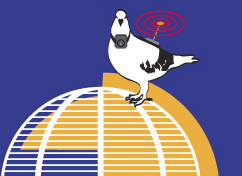|

At nighttime projections from moving cars are shone on the buildings in the industrial/abandoned part of town. Each car projects a video of a wild animal. The animal’s movements are programmed to correspond to the speed of the car: as the car moves, the animal runs along it, as the car stops, the animal stops also. Aggressive driving is reflected in the aggressive behavior of the animal. The animals are avatars of the drivers, who, enclosed in their bubble of safety, are separated from the stark and dangerous world of urban reality, as being in a different universe. The projections both expose the starkness of the urban landscape, and transform it into a world of dark fantasy.
Projections of wild animals are shone out of moving vehicles onto the buildings in the city’s industrial or business district. On the stage of the urban reality game, the animals become our fantastic avatars, figures controlled by our everyday appearance and actions. Projection disappears and flickers as it is supported by the architecture, inviting a reflection on the asymmetric architecture of urban design strategies, which exclude wildlife from our habitats. Wild animals in urban context become unautonomous contrivances brought into being by our romanticizing of nature. Extracted from their natural context (and forced out of their habitats by human encroachment), their existence is dependent on and tied to our fancies. While the decimation of the natural habitat of romanticized wildlife species raises our concern, the unglorified species, which learned to adapt to and survive in the environmental conditions of an urban metropolis, are seen as pests and rarely afforded the proud name of “wildlife”. Each car is equipped with a speed sensor, microcontroller, laptop and a data projector. The videos projected correspond to the speed of the car: the faster the car moves, the faster the animal runs along it, when the car stops, the animal stops also. The animal’s behavior is also affected by how aggressively or gently the vehicle is driven, sudden acceleration and slamming on the brakes makes the animal movements and facial expressions more aggressive. Videos are pre-manipulated: animal is cut out from the original videos’ background and manipulated in Adobe After Effects into short loops of different behavior. The animals are photorealistic. The speed of the car is measured by a Hall effect sensor, which sends data to a microcontroller, which communicates with a Director MX (running on a laptop). Director runs a program which determines which video is played and at what speed. Several vehicles can be taking part in the performance, creating interactions between the various animals, as the vehicles pass or get closer and further away from each other. The drivers of the vehicles are the “performers”; the members of the audience can ride in the vehicles as passengers. The fleet would do a loop on the city streets and return to the point of the departure to pick up other passengers. Two passengers can be taken inside each car, but the piece is mostly to be experienced by viewers on the streets. Documentation of the ride, both from inside and outside the car would be displayed either as a projection or on a monitor at the point of the cars’ departure (gallery). http://www.flightphase.com
|
